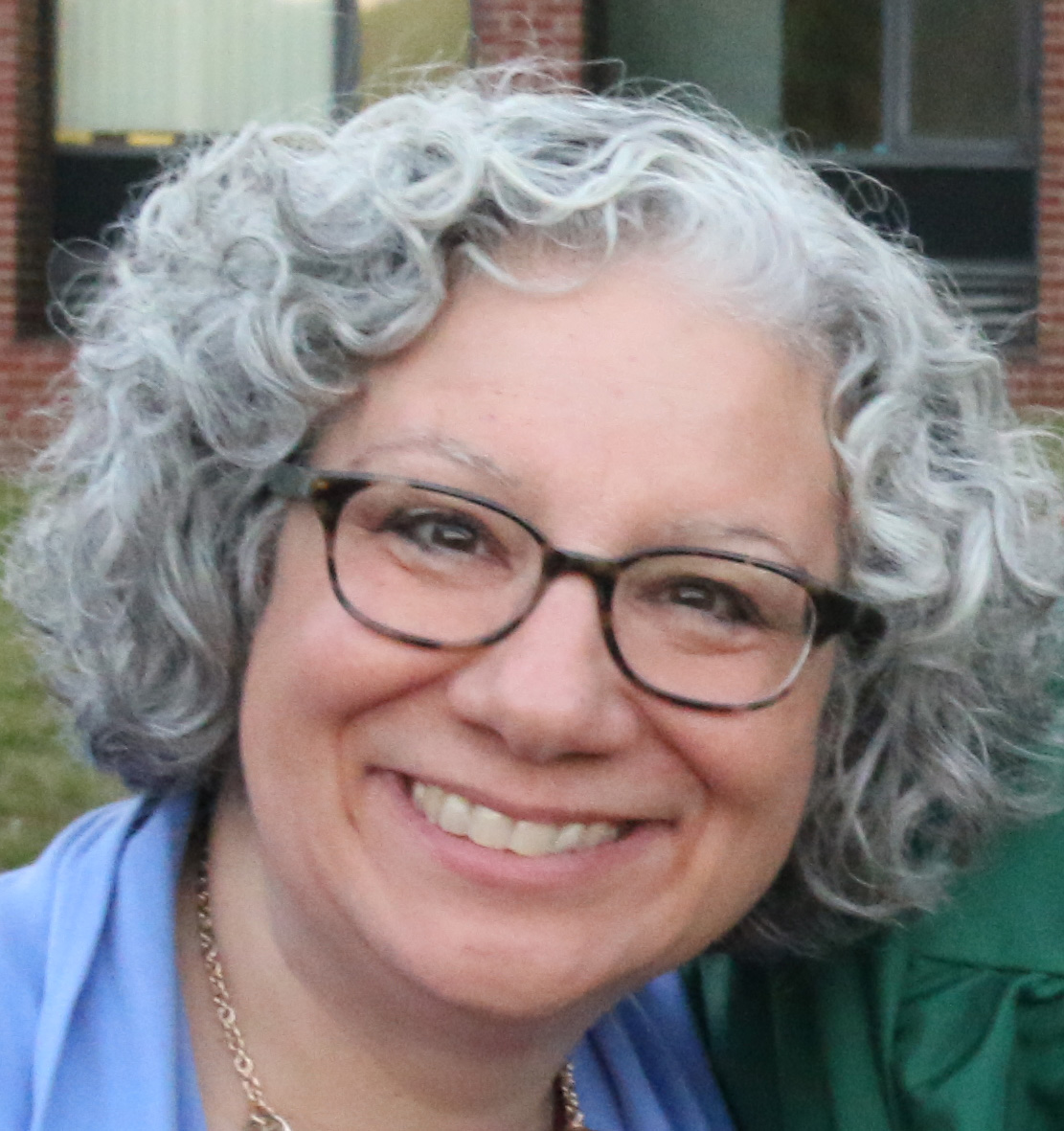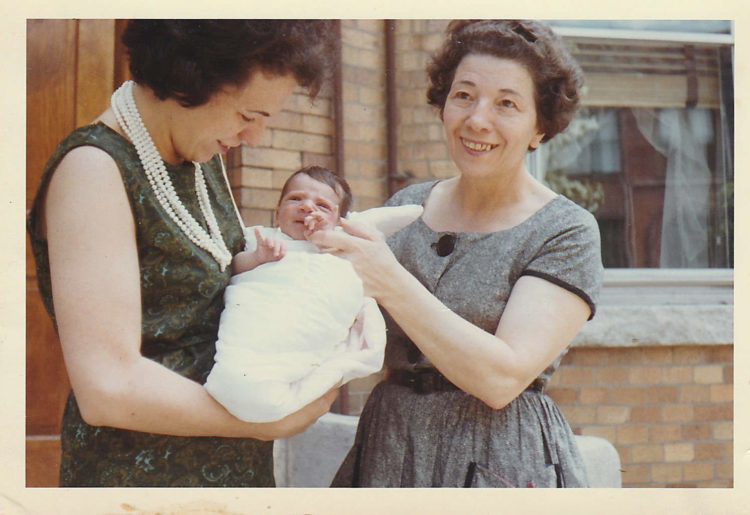
Madeline Bodin as an infant with her mother, left, and grandmother in Brooklyn in 1963.
Harris’s journey as a Black, Asian-American woman with the ambition and credentials to run for high office is going to be different from the path traveled by white men. We don’t have to look too far back for an example: Think about the story we are still telling about Hillary Clinton. She won the popular vote, yet the narrative casts her in the role of loser.
As a journalist with a passion for narrative, I’ve given a lot of thought to story structure. But I never considered that women might need a narrative structure of their own until I attempted to find the story in my 95-year-old grandmother’s memoirs. I typed what she had written in her neat script on lined paper, and arranged her vignettes in chronological order. But something was missing: a storyline.
I was confident I could help her find that story. Ask me about story, and I’ll tell you that the “somebody wants something” is the atomic structure of story and that “first something happened, and then, because of that, something else happened” is the force that holds a story together.
But I knew that my grandmother, growing up poor and female at the beginning of the 20th century, didn’t have many choices. She wasn’t allowed many wants; her family couldn’t afford them. Still, 14 years ago, as she sat in my living room a few days after Christmas, that was the direction I was heading when I asked her, “When you were a little girl, what did you dream your adult life would be like.”
“I didn’t,” she spat, with a forcefulness that was unlike her.
I never imagined my grandmother would be a tough interview. I rephrased the question, but got the same answer. “That’s OK,” I told my grandmother. “We’ll do this another time.” I certainly needed more time to figure out how to phrase this question in a way she could answer. But there wasn’t any more time. My grandmother died a little over a month later.
So there was a certain amount of guilt that got me wondering: What about the stories of people who don’t want something? Maybe they are women with limited choices in life. Maybe their culture emphases the goals of groups like families or communities, and not individual wants and needs.
When Hillary Clinton ran for president, she was somebody who wanted something — the foundational material of a story. But that wasn’t acceptable, yet, for a woman, so her story was reframed. My grandmother had been a fan of Clinton’s when she served as a senator from New York, so it was easy for me to draw the connection between their two stories. With Kamala Harris running for vice president, is there time to learn to tell her story — women’s stories — in a fair way, before the November 3 election?
A woman’s real-life journey
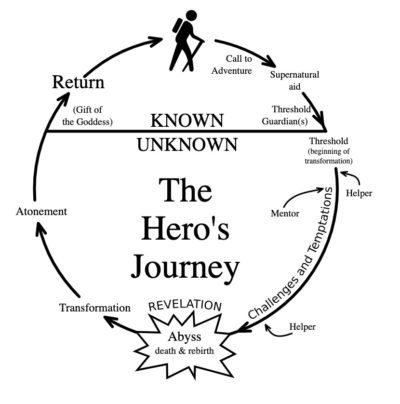 I’ve been a big fan of Joseph Campbell since college, when I first learned about his work. In his book “The Hero with a Thousand Faces,” Campbell, a literature professor, analyzed hundreds of epic stories from all over the world. In the stories of Gilgamesh, Moses, Jesus, and princes from “The One Thousand and One Nights,” he found a consistent pattern across time and culture. He called it the hero’s journey.
I’ve been a big fan of Joseph Campbell since college, when I first learned about his work. In his book “The Hero with a Thousand Faces,” Campbell, a literature professor, analyzed hundreds of epic stories from all over the world. In the stories of Gilgamesh, Moses, Jesus, and princes from “The One Thousand and One Nights,” he found a consistent pattern across time and culture. He called it the hero’s journey.
The hero’s journey was once popular among Hollywood screenwriters. It was certainly at play in the success of “Star Wars.” Writer and director George Lucas has said in interviews that he relied on “The Hero with a Thousand Faces” while writing his screenplays. Luke Skywalker’s journey belonged to the archetypal hero and spun box office gold.
So last year, when I learned there was a book called “The Heroine’s Journey,” (and I thought we might have a second female presidential candidate) I was in. Maybe this book had the answer about women’s stories that I was seeking.
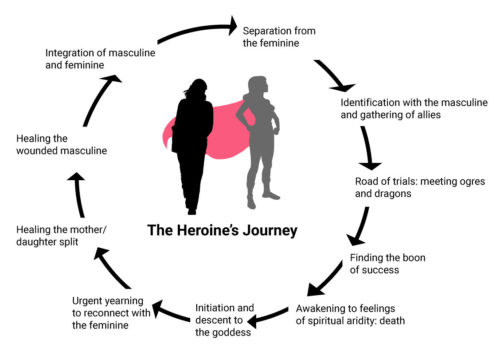 Maureen Murdock’s 1990 book had some bad news for me as a Joseph Campbell fan. In the book, Murdock, who is a psychologist, describes meeting Campbell and asking him about the heroine’s journey. “Women don’t need to make the journey,” he told her. “All she has to do is realize that she’s the place people are trying to get to.” (Woman as bus station, I suppose.)
Maureen Murdock’s 1990 book had some bad news for me as a Joseph Campbell fan. In the book, Murdock, who is a psychologist, describes meeting Campbell and asking him about the heroine’s journey. “Women don’t need to make the journey,” he told her. “All she has to do is realize that she’s the place people are trying to get to.” (Woman as bus station, I suppose.)
In response, Murdock put together her own heroine’s journey. This journey starts when a woman separates from “the feminine” and retraces the hero’s journey. But that’s only the beginning. Once a heroine finds the “boon of success” that ends the hero’s journey, she experiences a spiritual death. Traveling a man’s path is not fulfilling for her. So, Murdock’s heroine works to reconnect to the feminine.
As I read, the second half of the circle — the part about fighting, then healing, the patriarchy — felt to me like an unnatural growth, a pimple. I resisted the notion that women should have to fight the patriarchy. I’m looking for a fundamental story structure for women, and I’d like to find one that works in all societies, not just patriarchies.
In a later chapter, Murdock describes how she developed this journey to help her therapy clients, many of whom were women who were outwardly successful but deeply unhappy. Believe it or not, I did not realize until that moment that I was reading a self-help book, not a literary or anthropological work, as Campbell’s book is. “The Heroine’s Journey” wasn’t giving me a universal story structure, so I kept reading.
I found a 2011 article in Los Angeles Magazine by , who would later become the writer and producer of the television series “Transparent.” The article is titled “Paging Joseph Campbell: turns out that the fabled Hero’s Journey is a bunch of hooey when you’re writing about heroines.”
Soloway had mastered the hero’s journey as a screenwriting form, and rejected it for heroines’ stories. They looked to movies written by women about women, such as Diablo Cody’s “Juno” and Callie Khouri’s “Thelma & Louise,” for patterns. Soloway decided that the structure of a heroine’s story is circular, but has different stops and winds forward differently than those along the hero’s journey. Soloway sees it more like a Slinky or a road that winds up a mountain, where a traveler views the same landmarks from a higher elevation with each turn around the circle.
Soloway writes about Murdock’s book and sees their two versions of the heroine’s journey as similar.
The three ages of the woman’s journey
In the chapter titled “Pure Heroines” in her 2019 book of essays, “Trick Mirror,” Jia Tolentino classifies literary heroines into three ages. The heroines we first meet as children are independent and active, she says; she uses Laura Ingalls from the Little House on the Prairie series as a frequent example. The heroines we meet as adolescents are traumatized; think of Katniss Everdeen in “The Hunger Games,” forced to kill to save her own life. And the heroines we meet as adults — Tolentino draws heavily on “Madame Bovary” and “Anna Karenina” — are bitter.
Within these age classes, it seems that the child heroines likely follow the hero’s journey. Tolentino paraphrases Simone de Beauvoir’s “Second Sex:” a girl is simply a human being before specifically becoming a woman. A girl’s journey is not much different from a boy’s or a man’s. Then something happens to change the map of her journey.
“Adulthood is always looming,” Tolentino writes. Specifically, she writes, marriage and children mean the end of the freedom to adventure. I would expand that to include sexual desire as an end. That may mean being the object of men’s desire, welcome or not, or it might mean wanting to be desired. So for our adventurous girl, maturity means a shift from fulfilling her own goals to helping others (husband, lover, children) meet their goals, or losing their place as a protagonist by becoming an object in someone else’s story. (Woman as bus station, again.)
The life cycle of the literary heroine that Tolentino describes could be a journey of its own: the freedom of childhood, a trauma, and an adulthood of disconnection, anger or bitterness.
If you don’t like the way that journey ends, well, neither do I. I think it’s important to remember that Madame Bovary and Anna Karenina lives were scripted by men. And that while Campbell was categorizing epic tales about heroes, he included both tragedies and comedies among the stories he included in his analysis. I don’t want to give up on a happier ending for women’s stories until a few comedies are in the analytical mix.
But Tolentino’s essay focuses on characters within stories, not on the structure of those stories. I’ve plucked out the ideas that fit here. In a February article in The New York Times Magazine, Brit Marling, an actor, writer and producer whose show, “The OA,” ran for two seasons on Netflix, addressed women’s stories directly. Marling says that she had to write her way out of the confining roles she was playing, both on the screen and in her life. But it wasn’t easy. “Even when I found myself writing stories about women rebelling against the patriarchy, it still felt like what I largely ended up describing was the confines of patriarchy.”
Her success as a filmmaker gave her access to a new role in others’ films: the strong female lead. You know this character: “She’s an assassin, a spy, a soldier, a superhero, a C.E.O.” Marling writes that playing these characters made her feel formidable and respected. Eventually, however, she realized that, far from portraying some deep truth about women, she was depicting masculine traits in a woman’s body. Do movies and television shows always have to kill the feminine?
At the very end of the article, Marling compares the hero’s journey to a male orgasm, but says she has only questions, not answers, about how a woman’s journey would unfold when it doesn’t merely reflect a man’s desire.
Writing to a new ending
At the end of my own journey in search of a universal structure for women’s stories I found myself, like Marling, with no clear answers, but a better idea of where to search for them. I’ll keep looking for answers in the stories that women tell about other women for other women. And I’ll look to writers like Marling who have given these ideas a lot of thought.
I’ve also realized that, yes, fighting patriarchal notions, cultural restraints, male violence, and male abuse shouldn’t be part of the fundamental story shared by womankind. But I think that we’re stuck with it for a while. Even Sweden, where women enjoy legal rights and cultural equality that I’m not sure we in the United States can really grasp, has made crime novels featuring violence against women one of its leading exports.
We’ve already seen how the story of Kamala Harris, possibly the next vice president of the U.S. and a future contender for the presidency, is getting bent to fit the mold; I can only imagine what the next three months will bring.
If “somebody wants something” is the atomic structure of story (and I do realize that’s a rule of my own creation), and we live in a culture where a woman’s desire — sexual, political, financial — is considered unseemly, we have a fundamental problem telling any woman’s story. In this environment, women have a hard time identifying their own desires and seeing the story in their own lives.
I suspect that at least part of the answer lies in not being too respectful of Campbell’s vision when we chose to use the hero’s journey as a story structure.
Douglas Burton, a novelist and blogger, wrote a series of blog posts about women’s stories, inspired by “Game of Thrones,” “Wonder Woman,” and his own novel about the Byzantine Empress Theodora, all written by men. Despite the male focus, he noticed that for the hero, home is a safe space, where for the heroine, home is often a place that must be fled. For the hero, the enemy that must be overcome is the outsider: a monster, an invader, or even death itself. For the heroine, the enemy that must be confronted may be someone near to her, someone beloved to her, or even herself.
I think Burton has a good point. Maybe the heroine does not return with a boon for all humanity. We can tell the story anyway. Maybe the heroine is not called to adventure, but is spit out into the world by her home circumstances. Maybe the monster the heroine must slay is not alien to her, but the patriarchal elements of her own culture.
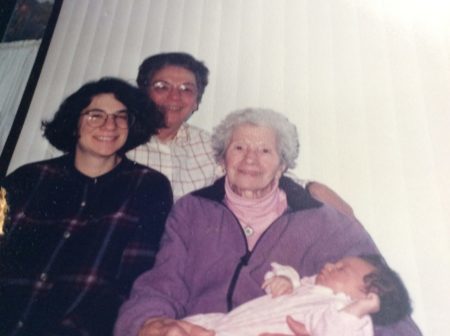
Madeline Bodin with her mother (center), grandmother and infant daughter. Vermont 1996.
A wise journalist, editor and teacher once said, that when you are stuck, you need to ask more questions. So I called my mom to ask her what she thought had made my grandmother so angry when I asked about her life story. My mother thinks my grandmother was bitter at the end of her life, and that made it hard for her to think about her life’s happier beginning. (And my mother hasn’t even read Jia Tolentino’s essay.)
I was glad to hear that my mother thought that my grandmother once had desires and had made choices to fulfill those desires. I was glad to know that she had a story once, even if I won’t know the truths behind that story. Maybe I was wrong about the role of thwarted choices and unacceptable desires in women’s fundamental narratives, I said to my mom.
That’s when my mother launched into a story of her own. How when she was in high school (in the middle of the 20th Century), women had few choices. How her father thought college was a waste of time for a woman. How she was determined to go anyway, so she worked two jobs to pay for it.
And then she apologized. “I know I’ve told you this story many times before.”
Madeline Bodin is a freelance environmental and science journalist who is based in Vermont, but will travel just about anywhere for a good story.


